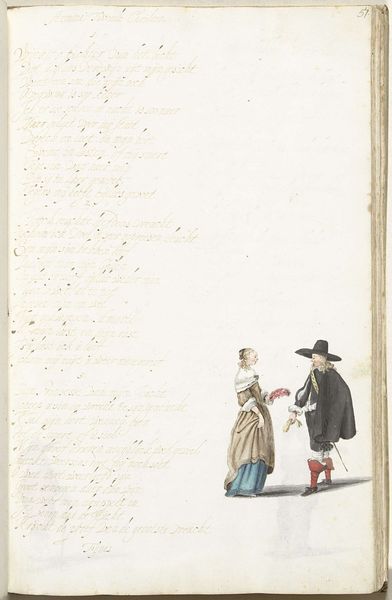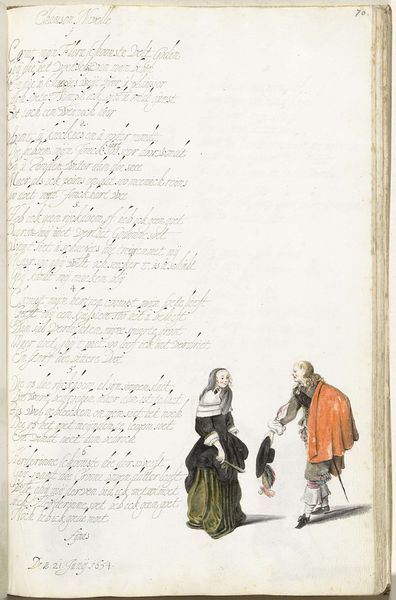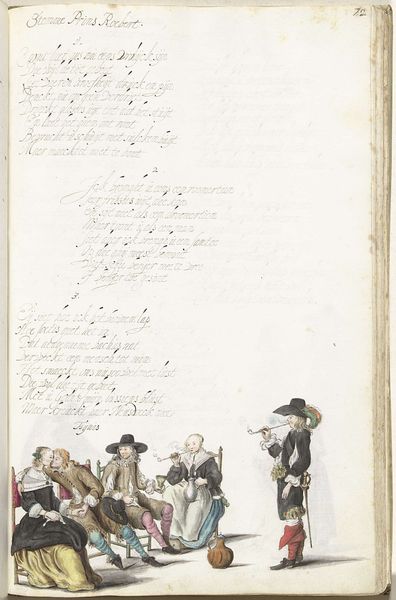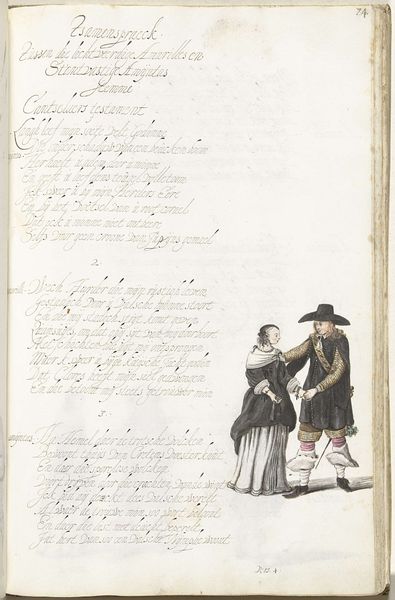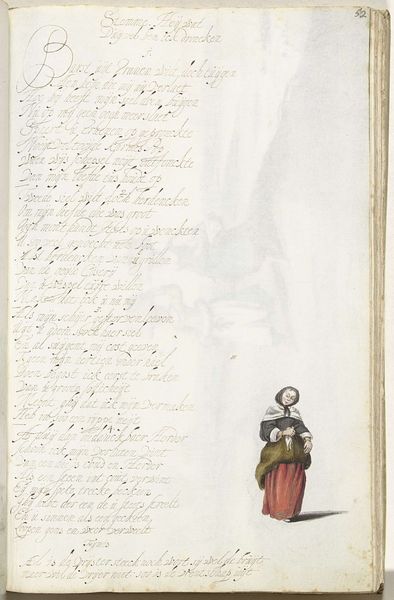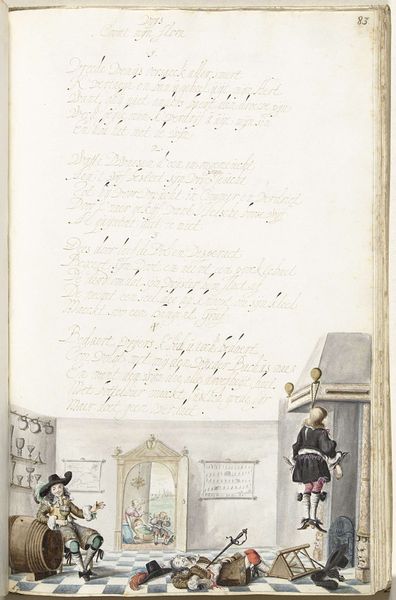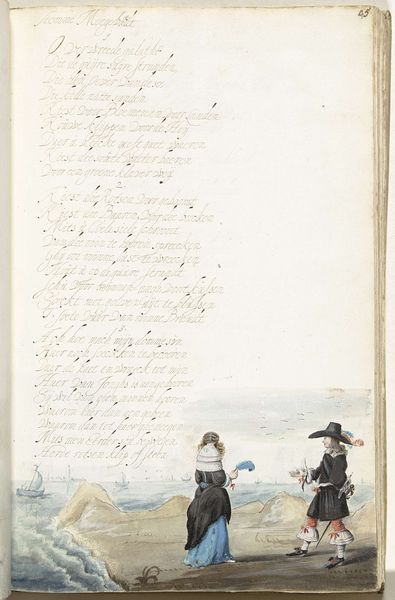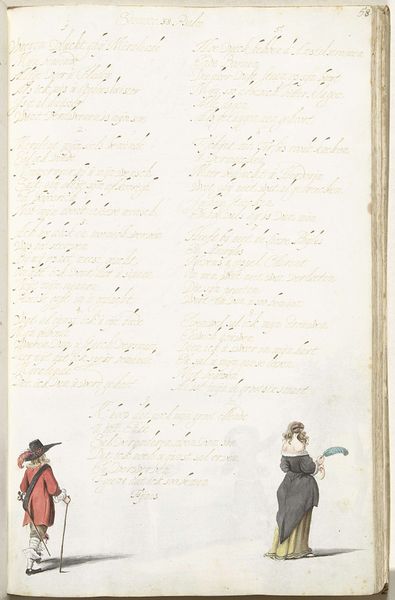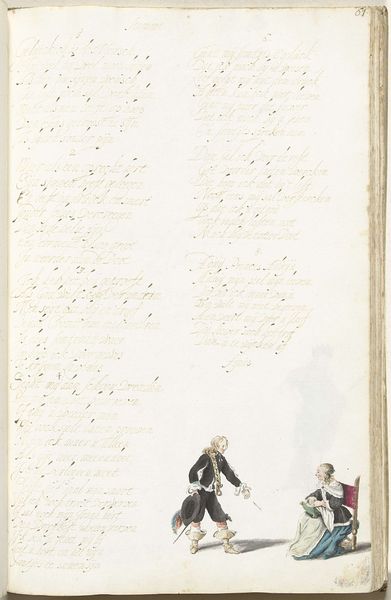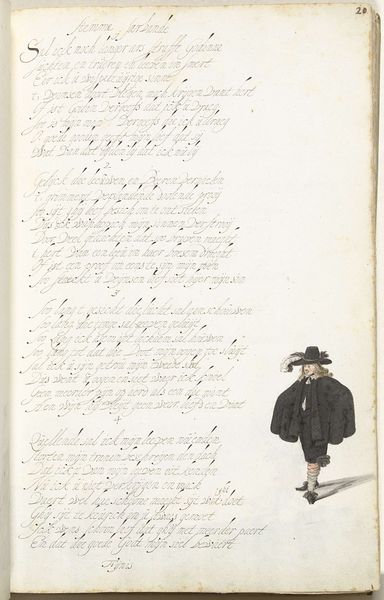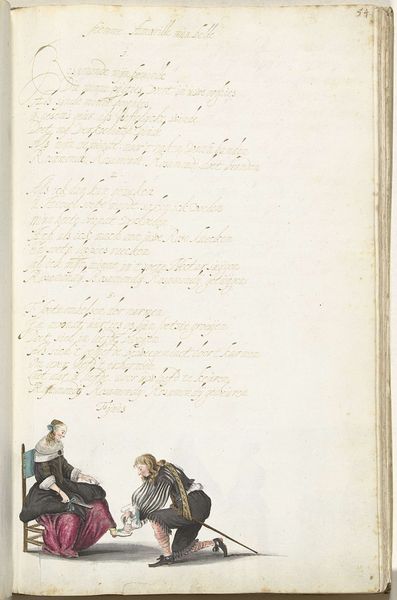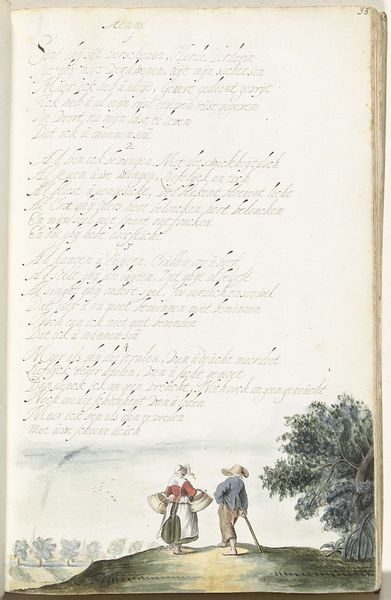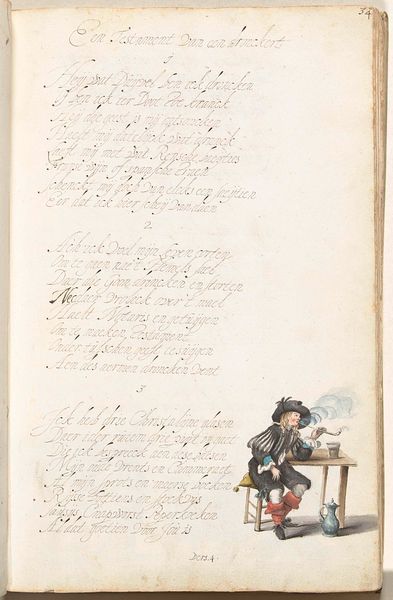
drawing, coloured-pencil, paper, watercolor
#
portrait
#
drawing
#
coloured-pencil
#
paper
#
watercolor
#
coloured pencil
#
genre-painting
#
watercolor
Dimensions: height 313 mm, width 204 mm
Copyright: Rijks Museum: Open Domain
Curator: Before us we have Gesina ter Borch’s “Two Gentlemen and a Peasant Girl,” a watercolor and colored pencil drawing on paper, created around 1654. It's currently held here at the Rijksmuseum. Editor: My first thought is how strangely stark it is. The figures are vividly rendered, but the blank page around them feels almost aggressively empty. What is she trying to convey with such bareness? Curator: Well, let's consider Ter Borch's context. She came from a family of artists in the Dutch Golden Age. What appears to be a standalone drawing is, in fact, a page in a friendship album—a common social artifact used to preserve verse and images during this time. This explains the inscription at the top. The emptiness provides room for written additions and perhaps more imagery by other hands. Editor: That makes so much sense. The blankness almost begs for collaboration. But even considering it as one leaf in a personal scrapbook, I’m drawn to the juxtaposition of the figures themselves. What stories can be deciphered from the symbolic weight carried by those figures in this drawing? Curator: The peasant girl offering a bouquet is a timeless symbol of humility and perhaps availability. The two gentlemen are obviously of higher social standing given their clothing. Ter Borch clearly is showing some contrast within Dutch society. However, I also see something familiar here, the men display fashions then popular during that period indicating their social standing in this society. This drawing probably acts as an amusing commentary about class. Editor: The dog adds to this reading as it represents fidelity and aristocratic status in this period. I feel, however, there is tension in this composition—are they propositioning her? It’s all in that extended hand, isn’t it? The offer... or is it a command? It’s fascinating how Ter Borch leaves so much open to interpretation through these symbolic forms. Curator: Ter Borch worked during a time of growing artistic opportunities for women, although their subject matter was very constrained. This drawing is simple in concept but really gets you thinking. It’s interesting how this work continues to stir these social-historical and symbolic interpretations even centuries later, demonstrating its continued relevance. Editor: Exactly. What initially seemed like a simple, slightly awkward tableau becomes a multilayered reflection on class, gender, and unspoken power dynamics. Art like this reminds us that symbols always hold layers of meaning that can be brought into the open, or else left carefully guarded in plain sight.
Comments
No comments
Be the first to comment and join the conversation on the ultimate creative platform.
